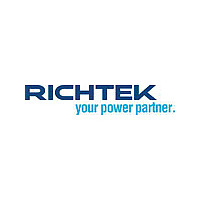rt9259 Richtek Technology Corporation, rt9259 Datasheet - Page 11

rt9259
Manufacturer Part Number
rt9259
Description
Synchronous Buck Dc-dc Linear Power Controller
Manufacturer
Richtek Technology Corporation
Datasheet
1.RT9259.pdf
(15 pages)
Available stocks
Company
Part Number
Manufacturer
Quantity
Price
Part Number:
rt9259AGS
Manufacturer:
RICHTEK/立锜
Quantity:
20 000
Part Number:
rt9259GS
Manufacturer:
RICHTEK/立锜
Quantity:
20 000
Part Number:
rt9259PS
Manufacturer:
RICHTEK/立锜
Quantity:
20 000
The ESR zero is contributed by the ESR associated with
the output capacitance. Note that this requires that the
output capacitor should have enough ESR to satisfy stability
requirements. The ESR zero of the output capacitor
expressed as follows :
2) Compensation Frequency Equations
The compensation network consists of the error amplifier
and the impedance networks Z
Figure 9.
Figure 10 shows the DC-DC converter's gain vs. frequency.
The compensation gain uses external impedance networks
Z
crossover frequency is desirable for fast transient response,
DS9259-03T00 August 2007
f
f
f
ESR
P1
C
Z1
and Z
=
=
=
2
2
-20
-40
-60
80
60
40
20
π
0
π
2
- 4 0
- 6 0
8 0
4 0
F
π
COMP
0
1 0 H z
10
x
x
Modulator
v d b ( v o ) v d b ( c o m p 2 ) v d b ( l o )
to provide a stable, high bandwidth loop. High
×
R2
R2
Gain
1
C
Figure 9. Compensation Loop
R2
OUT
x
1
x
1
EA
C1
C2
C1
C1
100
Z
1 0 0 H z
Figure 10. Bode Plot
F
Loop Gain
-
+
×
V
C2
+
x
REF
ESR
C2
C2
FB
1k
Frequency (Hz)
1 . 0 K H z
F r e q u e n c y
R
F
Z
R1
C
1 0 K H z
C
10k
and Z
Compensation
100k
1 0 0 K H z
F
Gain
as shown in
V
OUT
1 . 0 M H z
1M
but often jeopardize the system stability. In order to cancel
one of the LC filter poles, place the zero before the LC
filter resonant frequency. In the experience, place the zero
at 75% LC filter resonant frequency. Crossover frequency
should be higher than the ESR zero but less than 1/5 of
the switching frequency. The second pole is placed at half
the switching frequency.
Thermal Considerations
For continuous operation, do not exceed absolute
maximum operation junction temperature 125°C. The
maximum power dissipation depends on the thermal
resistance of IC package, PCB layout, the rate of
surroundings airflow and temperature difference between
junction to ambient. The maximum power dissipation can
be calculated by following formula :
P
Where T
temperature 125°C, T
θ
For recommended operating conditions specification of
RT9259, where T
temperature of the die (125°C) and T
ambient temperature. The junction to ambient thermal
resistance θ
packages, the thermal resistance θ
standard JEDEC 51-7 four-layers thermal test board.
The maximum power dissipation at T
calculated by following formula :
P
QFN-16L 4x4 packages
P
SOP-14 packages
P
SSOP-16 packages
The maximum power dissipation depends on operating
ambient temperature for fixed T
θ
allows the designer to see the effect of rising ambient
temperature on the maximum power allowed.
JA
JA
D(MAX)
D(MAX)
D(MAX)
D(MAX)
. For RT9259 packages, the Figure 11 of derating curves
is the junction to ambient thermal resistance.
= ( T
= ( 125°C − 25°C ) / 110°C/W = 0.909 W for
= ( 125°C − 25°C ) / 54°C/W = 1.852 W for
= ( 125°C − 25°C) / 100°C/W = 1.000 W for
J(MAX)
J(MAX)
JA
is layout dependent. For VQFN-16L 4x4
is the maximum operation junction
− T
J(MAX)
A
A
is the ambient temperature and the
) / θ
JA
is the maximum junction
J (MAX)
and thermal resistance
JA
A
is 54°C/W on the
A
RT9259
is the maximum
www.richtek.com
= 25°C can be
11







